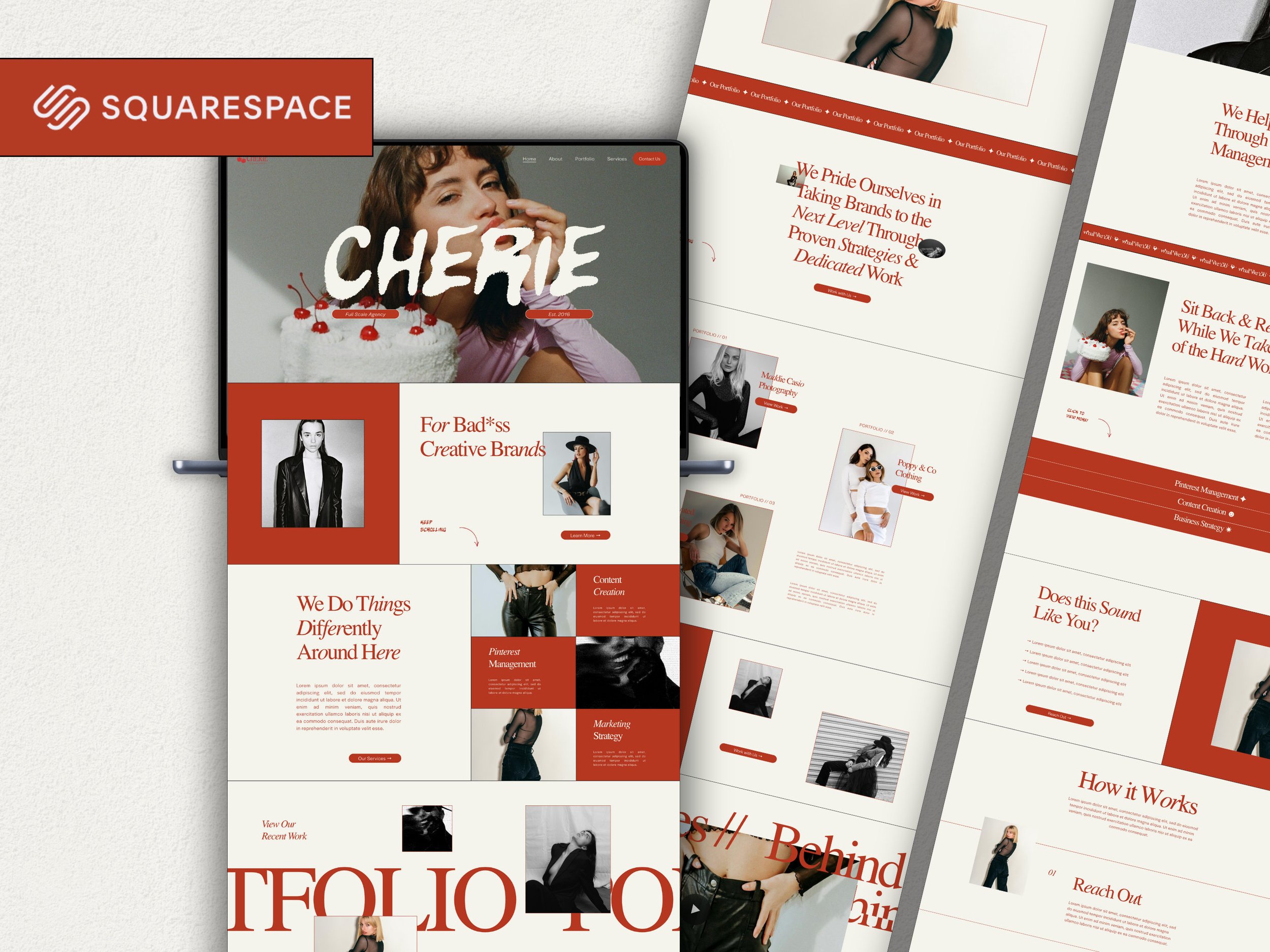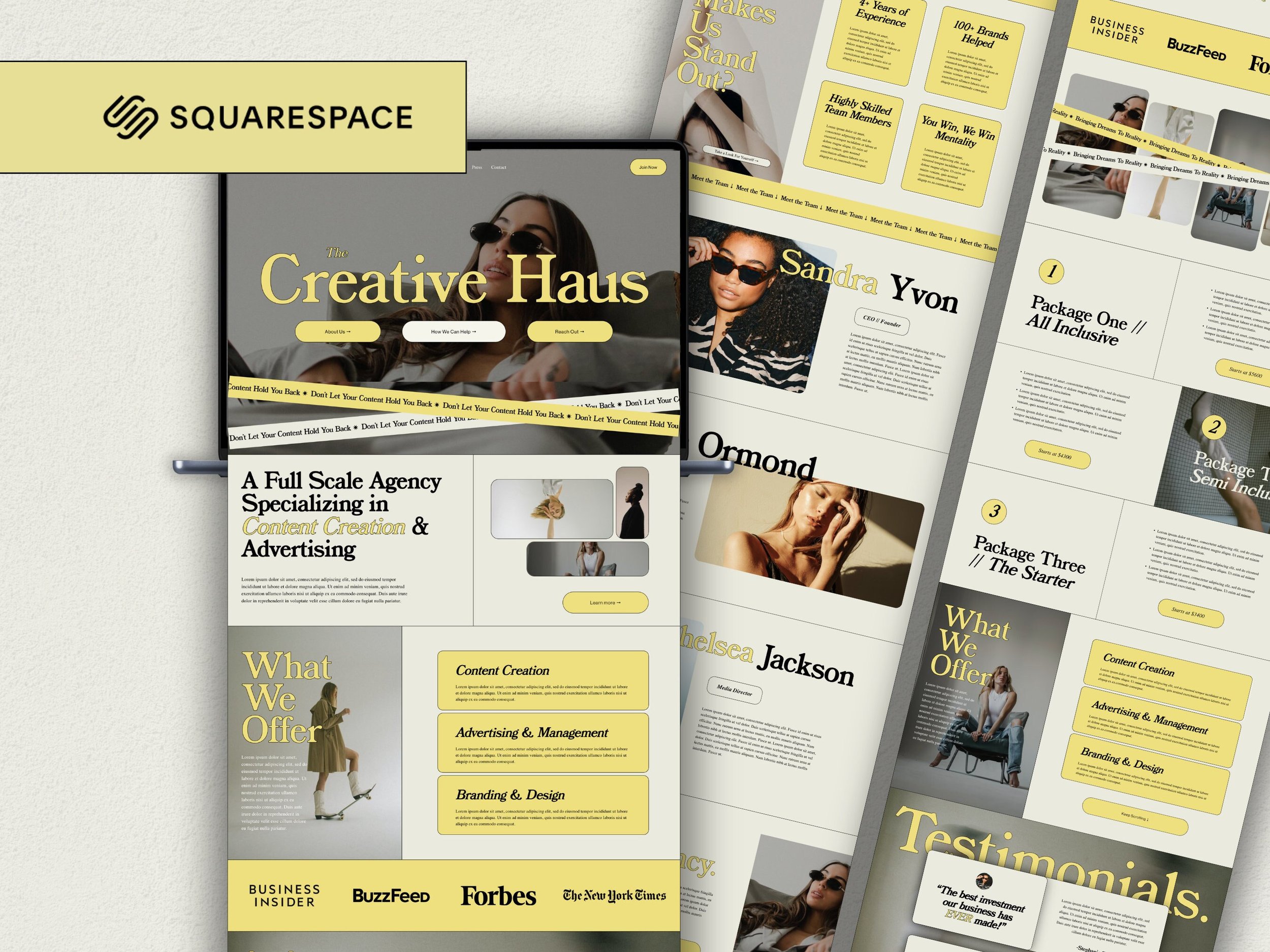Custom Squarespace Design vs. Pre-made Templates: Which is Right for Your Business?
In the world of web design, choosing between custom designs and pre-made templates is a crucial decision that can significantly impact your business's online presence. Both options have their unique advantages and disadvantages, and the right choice depends on your specific needs, budget, and goals. This article will explore the differences between custom designs and pre-made templates, their respective benefits and drawbacks, and how to make an informed decision that aligns with your business objectives.
Understanding Custom Design
Custom web design involves creating a unique website tailored specifically to your business. This process typically involves working with a professional web designer or a web design firm to develop a site from scratch. Here are some key aspects of custom design:
Premium Squarespace Templates Designed by Studio La Terre
Benefits of Custom Design
Unique Branding:
A custom-designed website allows you to create a unique brand identity. This can be crucial for businesses that want to stand out in a crowded market.
Custom designs can incorporate your brand’s colors, fonts, and visual elements, ensuring consistency across all platforms.
Tailored Functionality:
Custom websites can include specific features and functionalities that are unique to your business needs.
Whether it's an e-commerce platform with bespoke features or a booking system for a service-based business, custom design ensures your site can do exactly what you need.
Scalability and Flexibility:
As your business grows, your website can grow with you. Custom websites are often easier to expand and modify.
You can add new features, pages, or integrations without being limited by the constraints of a template.
SEO Optimization:
Custom websites can be built with SEO best practices from the ground up, making it easier to rank higher in search engine results.
This includes clean code, fast loading times, and optimized content structures.
Enhanced User Experience:
A custom design allows for a user experience tailored to your specific audience.
This can lead to higher engagement rates, lower bounce rates, and increased conversions.
Drawbacks of Custom Design
Cost:
Custom websites are generally more expensive than template-based sites due to the time and expertise required.
The investment can be significant, especially for small businesses or startups.
Time-Consuming:
Developing a custom website can take weeks or even months.
This longer timeline might not be suitable for businesses needing a quick online presence.
Complexity:
Managing and maintaining a custom website can be more complex, requiring ongoing support from a developer.
Any updates or changes often need to be handled by a professional, adding to the overall cost.
Custom Web Design by Studio La Terre
Understanding Pre-made Templates
Pre-made templates offer a more affordable and quicker way to get a website up and running. These templates are designed by professionals and can be customized to a certain extent. Platforms like Squarespace provide a variety of templates that cater to different industries and styles.
Benefits of Pre-made Templates
Affordability:
Templates are significantly cheaper than custom designs, making them a viable option for businesses with limited budgets.
The cost savings can be redirected to other areas like marketing or product development.
Speed:
With a pre-made template, your website can be live in a matter of days, or even hours.
This speed is beneficial for businesses that need to establish an online presence quickly.
Ease of Use:
Many template-based platforms offer drag-and-drop builders that are easy to use, even for those without technical skills.
This allows business owners to make changes and updates themselves without needing a developer.
Professional Design:
Templates are designed by professionals, ensuring that you get a high-quality, visually appealing website.
These designs often follow the latest web design trends and standards.
Built-in Features:
Many templates come with built-in features such as SEO tools, responsive design, and integration with third-party services.
This can save time and effort in setting up essential functionalities.
Drawbacks of Pre-made Templates
Limited Customization:
While templates can be customized, there are limitations to how much you can change.
This can be restrictive if you have specific design or functionality requirements.
Lack of Uniqueness:
Using a template means that other businesses might have similar designs, making it harder to stand out.
This can dilute your brand identity if not managed carefully.
Scalability Issues:
As your business grows, a template might not be able to accommodate new features or high traffic volumes.
This could lead to the need for a complete redesign in the future.
Generic User Experience:
Templates are designed to cater to a wide audience, which means the user experience might not be optimized for your specific target market.
This can affect engagement and conversion rates.
SEO Limitations:
While many templates are SEO-friendly, they might not offer the same level of optimization as a custom site.
Certain technical aspects of SEO might be harder to implement with a template.
Customer Examples Using Squarespace Templates by Studio La Terre
Making the Decision: Custom Design or Pre-made Template?
Deciding between custom design and pre-made templates requires a thorough understanding of your business needs, goals, and resources. Here are some factors to consider:
Budget
Low Budget: If you have a limited budget, a pre-made template is a practical choice. It allows you to establish an online presence without a significant financial outlay.
High Budget: If budget is not a constraint, investing in a custom design can provide a unique and tailored solution that can grow with your business.
Time
Quick Launch: For businesses that need to go live quickly, templates offer a fast solution. They are pre-built and require minimal setup time.
Flexible Timeline: If you have the luxury of time, a custom design allows for a more thoughtful and thorough development process, ensuring every detail aligns with your vision.
Specific Needs
Unique Features: If your business requires specific features or functionalities that templates cannot provide, a custom design is the way to go. This ensures your website meets all your unique requirements.
Standard Features: If your needs are more generic and can be met by existing template features, a template might be sufficient.
Long-term Goals
Scalability: Consider your long-term business goals. If you anticipate significant growth or the need for additional features in the future, a custom design offers more flexibility.
Short-term Solution: If you need a website for a short-term project or campaign, a template might be a cost-effective and quick solution.
Brand Identity
Strong Brand Focus: If establishing a unique brand identity is crucial for your business, a custom design ensures that every aspect of your website aligns with your brand.
Basic Branding: If you can compromise on some aspects of branding, templates offer a professional look at a fraction of the cost.
Combining Custom and Pre-made Solutions
In some cases, a hybrid approach can be the best solution. This involves starting with a pre-made template and customizing it to better fit your needs. This can provide a balance between cost, time, and functionality. Here’s how to effectively combine both approaches:
Choose a Flexible Template:
Start with a template that allows for significant customization. Platforms like Showit and Squarespace offer templates that are highly customizable.
Hire a Professional Designer:
Consider hiring a web designer to customize the template for you. This can include adjusting the layout, colors, fonts, and adding custom features.
Focus on Key Pages:
Customize the most important pages of your website, such as the homepage, product pages, and contact page. This ensures that the critical parts of your site are unique and branded.
Optimize for SEO:
Work with an SEO expert to optimize the template for search engines. This can involve tweaking the code, improving site speed, and ensuring mobile-friendliness.
Test and Iterate:
Regularly test your website’s performance and user experience. Use analytics tools to gather data and make informed decisions about further customizations.
Customer Reviews by Studio La Terre
Conclusion
The decision between custom design and pre-made templates ultimately depends on your business's specific needs, budget, and goals. Custom designs offer unparalleled flexibility, scalability, and brand uniqueness, making them ideal for businesses looking to establish a strong online presence. However, they come with higher costs and longer development times.
Pre-made templates provide an affordable, quick, and user-friendly solution, suitable for businesses with limited budgets or those needing a rapid online presence. However, they might lack the uniqueness and advanced functionalities of custom designs.
By understanding the benefits and drawbacks of each approach, you can make an informed decision that aligns with your business objectives. Whether you choose a custom design, a pre-made template, or a combination of both, ensuring your website meets your business needs and provides a positive user experience is key to your online success.








